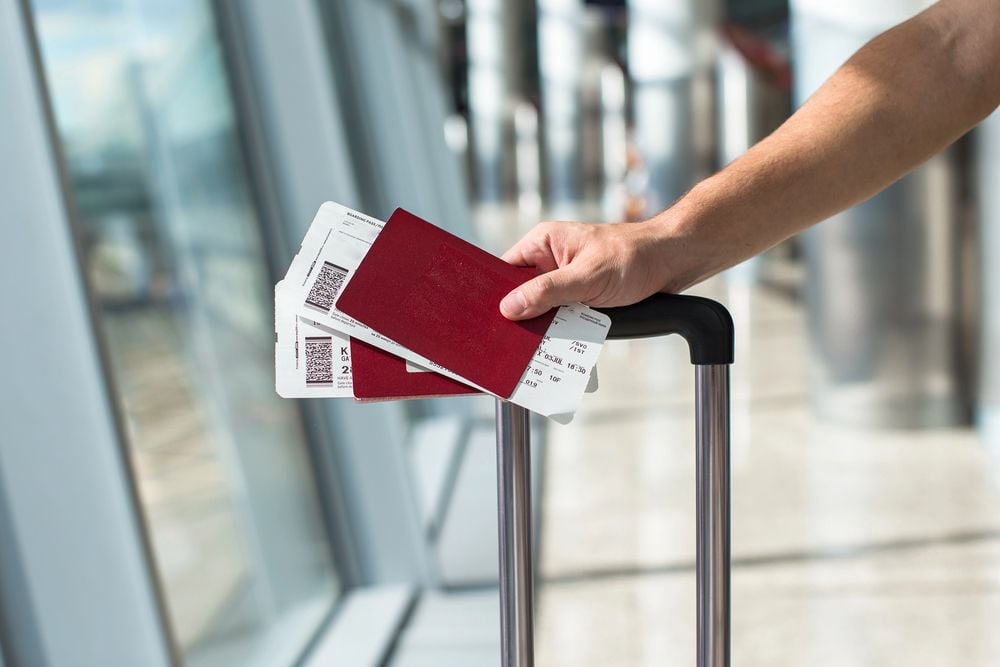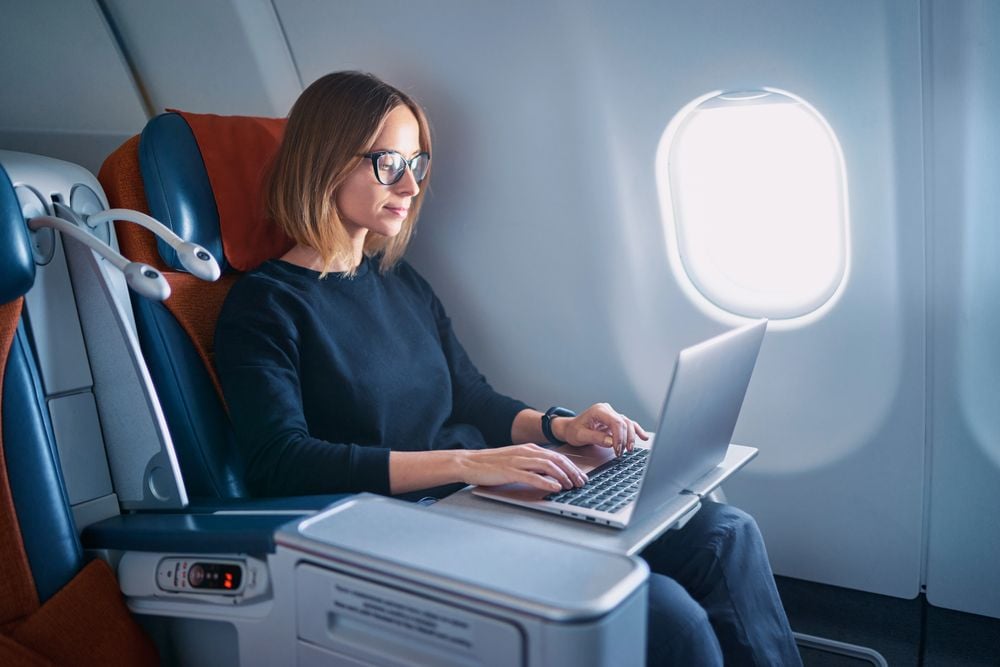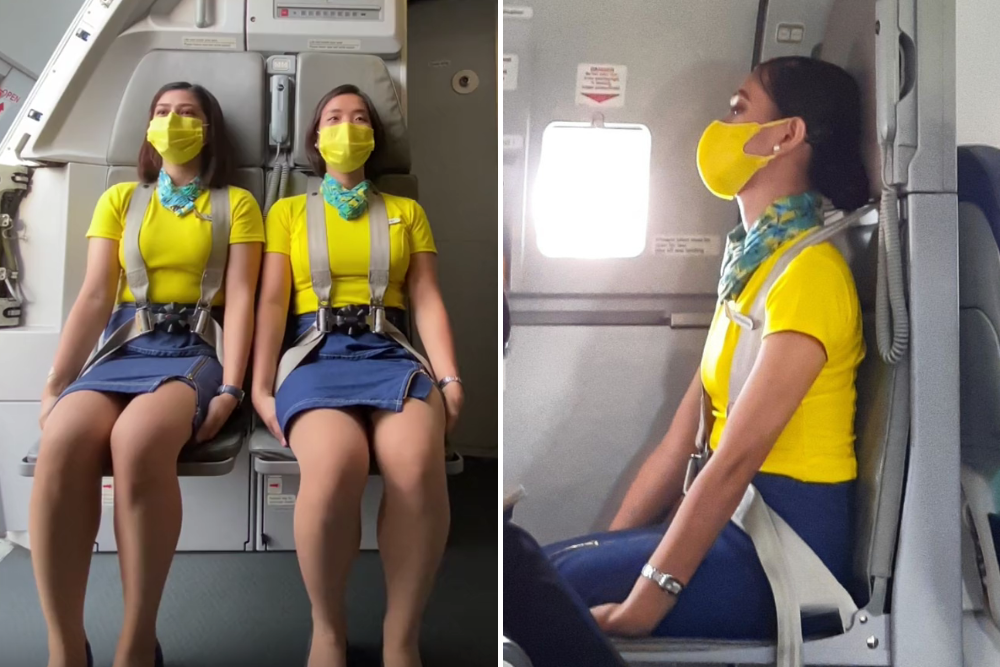Why This 4-Letter Boarding Pass Code Always Sends Travelers Into Panic Mode
You’re breezing through airport security when suddenly, an agent pulls you aside. Your boarding pass bears a mysterious mark — four bold letters: SSSS. If you’ve seen them before, you probably know what’s coming. If not, buckle up: you’ve just been selected for a Secondary Security Screening Selection.

This isn’t a secret society or some aviation conspiracy. It’s a very real part of airport travel in the U.S., and while it might feel invasive, it’s rooted in a complex security framework designed to keep the skies safe.
What Is “SSSS” and Why Does It Happen?
The Transportation Security Administration (TSA) uses SSSS as part of its Secure Flight program — a screening process that analyzes your name, date of birth, gender, and itinerary. It’s how TSA tries to determine if a traveler may pose a security risk.
Most travelers are selected at random. But certain behaviors or travel patterns can increase your odds. Think:
- One-way international tickets
- Booking with multiple airlines in one itinerary
- Using different passports
- Having a name that matches someone on the No-Fly List
As The Washington Post’s Natalie B. Compton noted in her reporting, “Some people are flagged for years at a time, then it stops.” There’s no public formula, just layers of security designed to adapt to evolving threats.
What Happens During an SSSS Screening?
The process varies, but it usually includes:
- A full pat-down
- Luggage swabs for explosives
- Questions about your travel plans
- A detailed check of your electronics and personal items
Though unnerving, it’s usually brief. “The TSA said most enhanced search scenarios will take about 10 minutes,” reports The Points Guy. But as with any travel hiccup, it’s smart to arrive early — just in case.
Stories From the Line: Travelers Share Their Experiences
For some travelers, SSSS is a one-off annoyance. For others, it becomes a recurring theme.
In 2009, the website Papers, Please! highlighted a notable incident involving a traveler who was pulled aside by TSA agents after a routine scan flagged a box containing cash as suspicious. The individual was escorted to a back room for further questioning, with the unclear image on the scanner triggering heightened scrutiny.
While today’s Secondary Security Screening Selection (SSSS) protocols have evolved considerably, this case remains a relevant example of how seemingly ordinary items can lead to additional screening. In response to the incident, the TSA later issued an official statement addressing the matter:
“Movements of large amounts of cash through the checkpoint may be investigated by law enforcement authorities if criminal activity is suspected. As a general rule, passengers are required to cooperate with the screening process. Cooperation may involve answering questions about their property, including why they are carrying a large sum of cash. A passenger who refuses to answer questions may be referred to appropriate authorities for further inquiry.”
The policy has since evolved, but the takeaway remains: cooperate, answer questions, and the process tends to go smoother.
Can You Avoid Being Selected?

If you always find SSSS in your travel plans, it could be more than just a coincidence. That means if you keep facing the same screening issues, you may have to apply for the DHS Traveler Redress Inquiry Program (TRIP) which helps resolve problems caused by misidentification or old watchlist information.
After approval, you will be given a redress control number that you can use when booking flights. Some people have noticed that this single action breaks the SSSS cycle.
However, you should be aware that it takes time. It may take a long time, sometimes even months and involves a lot of paperwork.
What About TSA PreCheck and Global Entry?
TSA PreCheck, Global Entry and Known Crewmember (KCM) are designed to assist low-risk travelers in passing through security more quickly. If you see SSSS on your boarding pass, it means you’ll have to go through secondary screening, no matter what programs you belong to.
The Bigger Picture: TSA’s Evolving Security Mission
The TSA was created in the wake of the September 11, 2001 terrorist attacks, a pivotal moment that reshaped air travel forever. Here’s a look at how the agency has developed over the years:
- Over 50,000 security officers
- Screening 2 million+ travelers daily
- Checking 5.5 million carry-ons and 1.4 million checked bags for threats
| Date | Event |
| Sep 2001 | 9/11 attacks on the Twin Towers in New York City |
| Nov 2001 | Aviation and Transportation Security Act signed; TSA officially formed |
| Dec 2001 | Attempted shoe bombing by Richard Reid |
| Apr 2002 | First federalized airport (Baltimore/Washington International – BWI) |
| Dec 2002 | Nationwide deployment of explosive detection for checked luggage |
| Apr 2003 | Completion of cockpit door fortification on all U.S. commercial aircraft |
| Apr 2003 | Launch of the Federal Flight Deck Officer (armed pilot) program |
| Aug 2006 | Liquid-explosives plot foiled; immediate liquids ban introduced |
| Sep 2006 | 3-1-1 liquids rule implemented at all checkpoints |
| Dec 2009 | “Underwear bomber” incident (Umar Farouk Abdulmutallab) |
| Mar 2010 | Rollout of Advanced Imaging Technology (full-body scanners) begins |
| Jun 2010 | Secure Flight reaches 100% passenger prescreening coverage |
| Oct 2010 | Printer-cartridge bomb plot intercepted on cargo flights |
| Dec 2011 | TSA PreCheck launched at Las Vegas (LAS) |
| Dec 2013 | First public TSA PreCheck enrollment center opens (Indianapolis – IND) |
| May 2016 | Nationwide deployment of Automated Screening Lanes begins |
| Mar 2020 | 12 oz hand sanitizers temporarily allowed due to COVID-19 |
| Jan 2021 | LAX becomes first airport with 100% Credential Authentication Tech (CAT) |
| Oct 2022 | TSA releases its first-ever Innovation Doctrine |
| Dec 2022 | Workforce compensation aligned to GS-equivalent federal pay structure |
| Mar 2023 | TSA introduces emergency cybersecurity rules for airports and airlines |
| Apr 2023 | $1.3 billion contract for advanced CT checkpoint scanners announced |
| May 2025 | Full enforcement of REAL ID at airport checkpoints scheduled |
Along with passenger screenings, the TSA is responsible for protecting the country’s airspace. The agency keeps an eye on more than 23,000 domestic and nearly 2,600 international flights every single day.

In 2023, TSA officers found an average of 4,432 firearms at airport checkpoints which highlights the ongoing dangers they encounter.
The TSA uses about 950 advanced imaging machines with privacy features and carries out more than 29,000 assessments every year to improve the skills and performance of its security officers.
Legal Protections Still Apply
While TSA procedures are broad, they’re not without limits. The agency must comply with the U.S. Constitution. The Fourth Amendment protects against unreasonable searches, and the Fifth Amendment ensures your right not to self-incriminate.
Still, refusing SSSS screening will likely result in you being denied boarding. As frustrating as it can be, the best approach is to stay calm and respectful. The goal is to keep flights safe, not to ruin your travel plans.
Resolving All Travel Issues: Redress and the No-Fly List
If you keep facing delays, are denied boarding or have to go through extra screening with no clear reason, you can use the DHS Traveler Redress Inquiry Program (DHS TRIP) to get help from the Department of Homeland Security. Thanks to this system, people can address issues related to travel, especially those caused by being mistakenly identified or listed on watch lists.
DHS TRIP serves as a coordination hub across multiple agencies, including:
- Customs and Border Protection (CBP)
- U.S. Citizenship and Immigration Services (USCIS)
- Immigration and Customs Enforcement (ICE)
- Office of Biometric Identity Management (OBIM)
- Office for Civil Rights and Civil Liberties (CRCL)
- DHS Privacy Office
As noted earlier, filing a redress request will allow affected individuals to work toward clearing their names and ensuring smoother travel experiences in the future.
Final Boarding Call
If you ever spot those infamous four letters on your boarding pass, here’s your game plan:
- Arrive early
- Cooperate fully
- Ask (politely) if you can apply a redress number in the future
- Stay calm — it’s usually over in 10–15 minutes
When security changes, air travel also changes. Even though the “SSSS” may always be present at airports, knowing what it means and how to deal with it can help you relax during your trip.
Because after all, flying should be about adventure, not anxiety.






